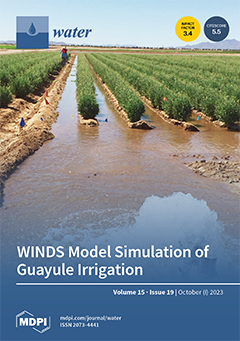This study analyzed frost formation data provided by the Harbin Meteorological Bureau and considered geographic factors, temperature, and population density. Various analytical methods, including linear fitting, the Mann–Kendall mutation test, the Pettitt method, and the sliding
t-test, were employed to identify the
[...] Read more.
This study analyzed frost formation data provided by the Harbin Meteorological Bureau and considered geographic factors, temperature, and population density. Various analytical methods, including linear fitting, the Mann–Kendall mutation test, the Pettitt method, and the sliding
t-test, were employed to identify the temporal and spatial changes as well as the effects of these factors on frost dates in Harbin. The study shows that the first FSD occurred on 18 August, in both 1966 and 1967, which was the 255th day. The latest FSD was observed on 10 October 2006, which was the 283rd day. The earliest occurrence of an FED was on 24 April 2015, which was the 114th day, and the latest was on 21 April 1974, which was the 141st day. The highest number of frost days occurred in 2012, with 161 days, whereas the shortest year was 1966, with only 123 frost days. Throughout the study period, the FSD increased by 7.8 days at a rate of −1.27d/10a, the FED increased by 10.9 days at a rate of 1.77d/10a, and the FFS increased by 18.9 days at a rate of 3.05d/10a. The propensity rates of the FSD and FFS at each location in Harbin indicate an upward trend, while for the FED, certain locations display an upward trend. In general, the FSD has exhibited a delayed trend, the FED has shown an earlier trend, and the FFS has experienced an extended trend. With one-way linear regression, the FSD exhibited an increasing trend at each site, while the FFS also indicated a similar trend, and the FED showed an overall decreasing trend. Throughout the study period, a change was observed in the FSD in 2000, resulting in an average arrival time of the 265th day, or 22 September, of that year. Subsequently, post mutation, the average arrival time of the FSD in the study area was the 272nd day, or 29 September, of that year. In 2006, the FED also underwent a change, with the average arrival time in the study area being the 128th day, or 4 April, of that year. After the change, the average arrival time of the FED in the study area was the 121st day, i.e., 8 April. In 1 April 2004 of that year saw a change in the FFS. Prior to the change, the FFS in the study area averaged the 137th day, whilst following the change, the FFS in the study area averaged the 150th day. The FSD and FFS within Harbin exhibit a negative correlation with latitude and a positive correlation with temperature. Additionally, the FED displays a positive correlation with latitude and a negative correlation with temperature. As the FSD, FED, and FFS in central Harbin are the earliest, latest, and longest, the Pearson correlation coefficient method and multiple regression cannot adequately reflect the effect of longitude.
Full article





